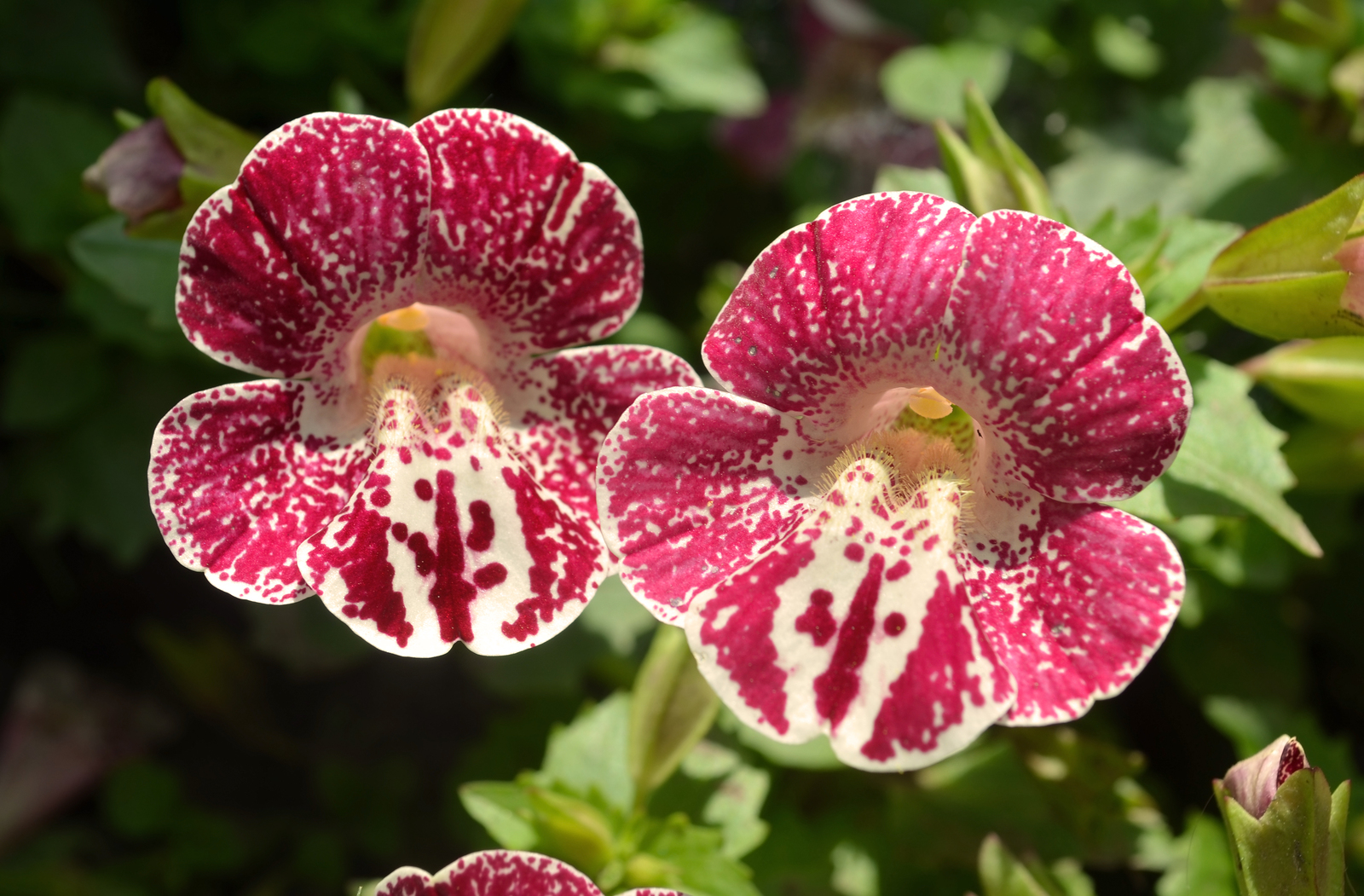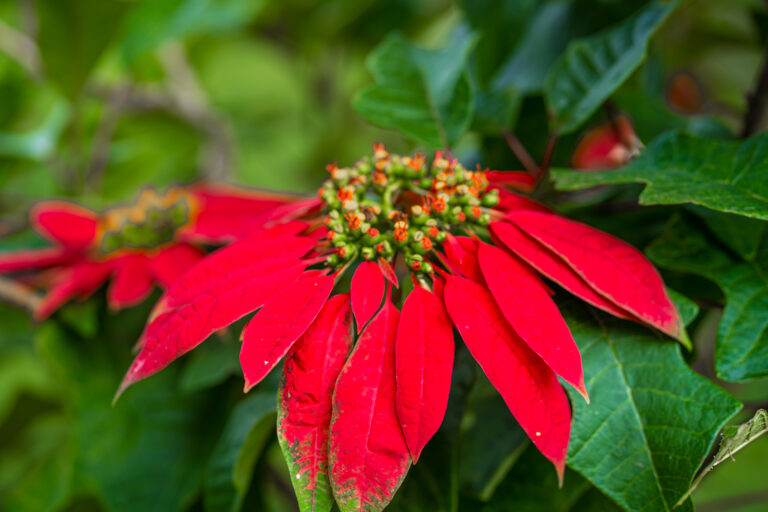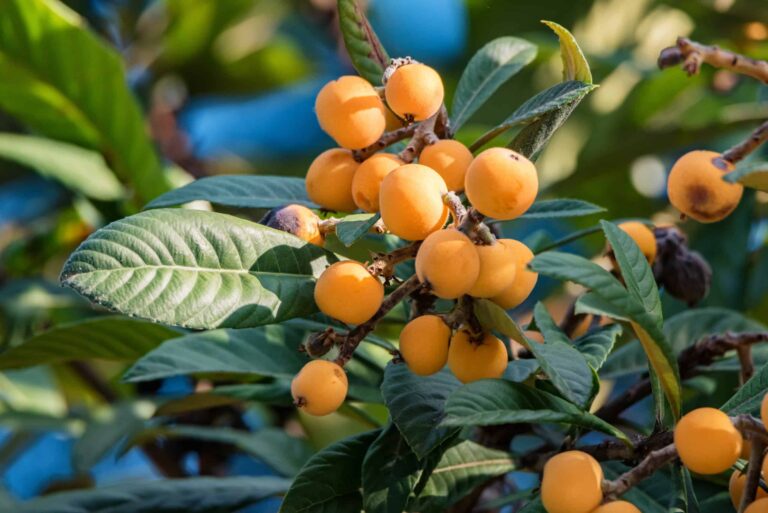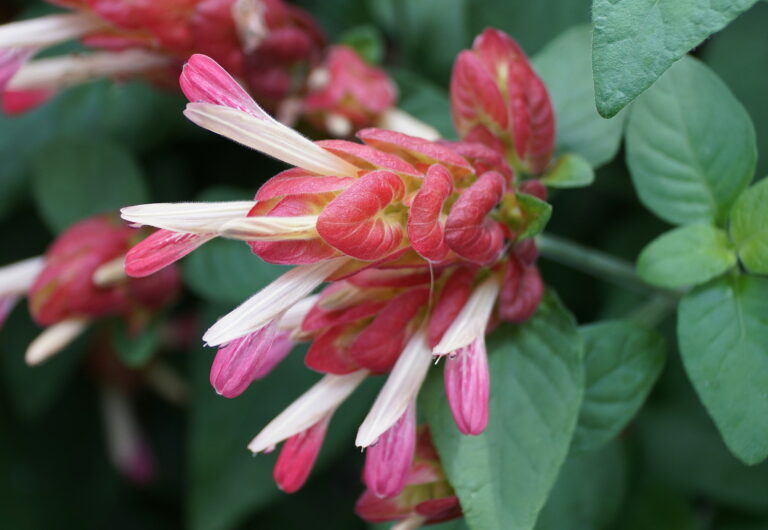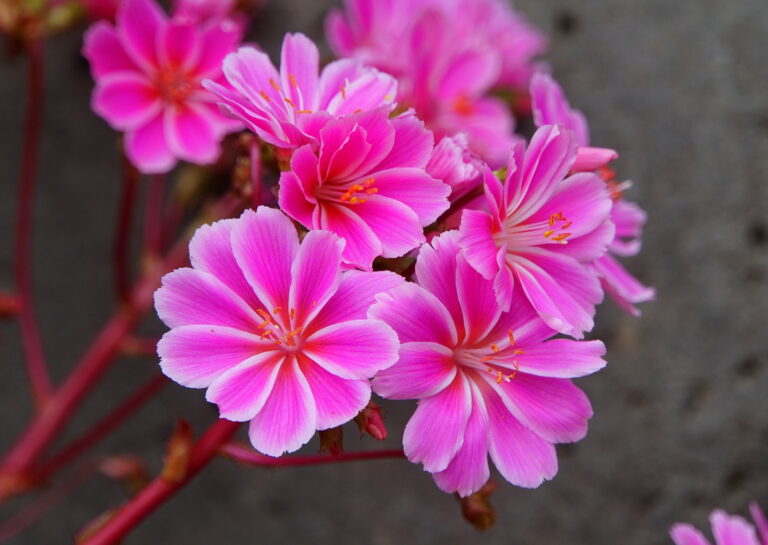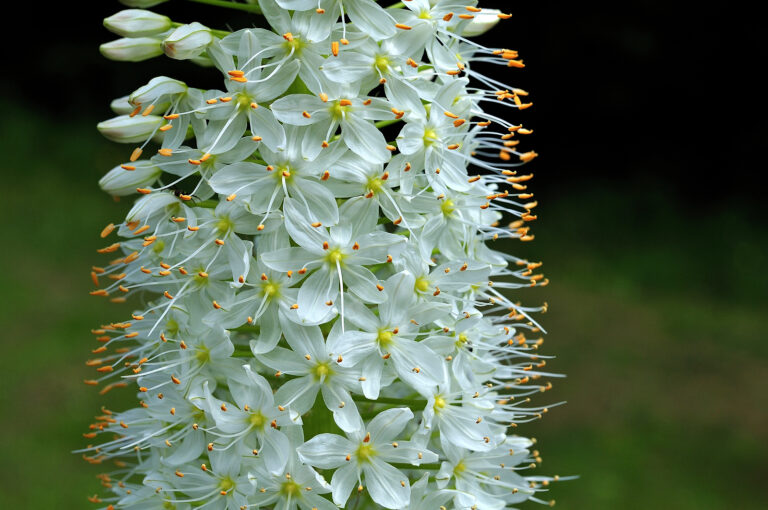How to Grow and Care for Monkey Flower — Mimulus
Mimulus–commonly called monkey flower–is a spreading perennial commonly grown as an annual. Mimulus produce dragon-like two-lipped flowers that cover the plant from summer to early fall. Flowers bloom in shades of red, pink, yellow, and orange. Flowers are often spotted with contrasting colors.
The Mimulus genus includes about 150 species of annuals, perennials, and shrubs. They are native to damp regions in the Americas as well as Africa, Asia, and Australia. Monkey flowers thrive in boggy soil.
Mimulus can spread with a mass of small, toothed, green downy leaves. Use monkey flowers in shady borders or plant in hanging baskets or window boxes.
Mimulus attract hummingbirds.
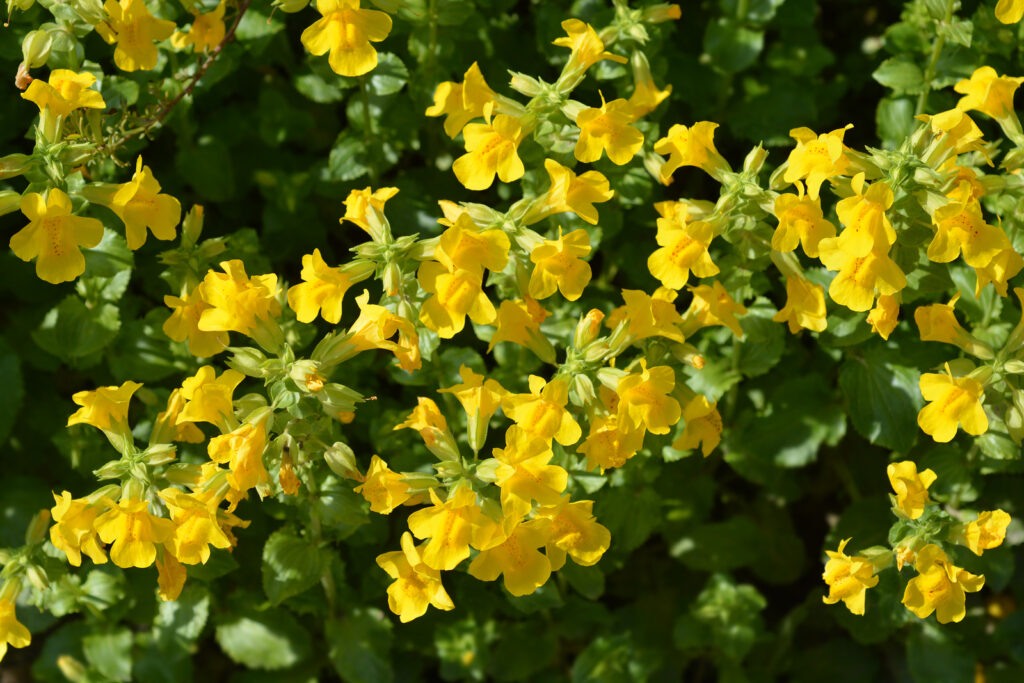
How to use Mimulus in your garden
- Beds and Borders: Mimulus species like Diplacus aurantiacus (formerly Mimulus aurantiacus) are excellent for adding color to beds and borders. Their bright blooms attract pollinators such as bees, butterflies, and hummingbirds, enhancing the biodiversity of your garden .
- Rock Gardens and Slopes: Certain Mimulus varieties thrive in rocky or well-drained soils, making them suitable for rock gardens or slopes. Their ability to grow in challenging conditions adds resilience to your garden design .
- Containers and Hanging Baskets: Compact Mimulus hybrids are ideal for container gardening. Their trailing habit and colorful flowers make them perfect for hanging baskets or patio pots, adding vertical interest to small spaces .
- Water Features and Moist Areas: Some Mimulus species prefer moist environments and can be planted near ponds or water features. Their presence can help stabilize soil and prevent erosion in these areas .
Mimulus design ideas
1. Pollinator-Friendly Borders
Plant Mimulus in sunny borders to attract hummingbirds, bees, and butterflies. Their tubular flowers are especially enticing to hummingbirds, making them ideal for creating a lively pollinator garden. Waterwise Garden Planner
2. Rock Gardens and Slopes
Utilize low-growing Mimulus varieties in rock gardens or on slopes. Their adaptability to rocky soils and drought conditions makes them suitable for these challenging areas. Waterwise Garden Planner
3. Container Plantings
Mimulus thrive in containers, making them perfect for patios or small spaces. Use decorative pots to showcase their vibrant blooms, and consider pairing them with other drought-tolerant plants for a cohesive look. Greg App 🪴
4. Rain Gardens and Moist Areas
Certain Mimulus species prefer moist environments, making them suitable for rain gardens or areas with poor drainage. Their presence can help stabilize soil and add color to wetter parts of the garden.
5. Wildlife Gardens
Incorporate Mimulus into wildlife gardens to support local ecosystems. Their flowers provide nectar for pollinators, and their seeds can be a food source for birds.
Get to know Mimulus
- Plant type: Perennial grown as an annual
- Growing Zones and range: annual in Zones 2-11; grow as a perennial in Zones 9-11.
- Hardiness: Tender; plants are killed by frost
- Height and width: 8 to 12 inches (20-30cm) tall and wide or slightly more
- Foliage: Pale to dark green entire or toothed succulent leaves are linear to nearly rounded
- Flowers: Lipped flowers; flowers are 2 inches (5cm) or slightly more across
- Flower colors: Shades of yellow, rose, red, orange, and bicolor and spotted
- Bloom time: Spring to the first frost
- Uses: Beds, borders, bog gardens, baskets, and containers; monkey flowers attract hummingbirds
- Common name: Monkey Flower
- Botanical name: Mimulus hybrids
- Family: Scrophulariaceae
- Origin: Southern Africa Asia, Australia, Central and South America
Where to plant Mimulus
- Plant Mimulus in full sun in Zones 2 to 5; in warm summer regions plant Mimulus in part to full shade.
- Grow Mimulus in humus-rich, well-drained soil.
- Mimulus grow best in areas with cool, wet summers.
Mimulus uses
- Mimulus will add a warm, bright color at the front of a shady border.
- Mimulus will fill out a hanging basket or container quickly.
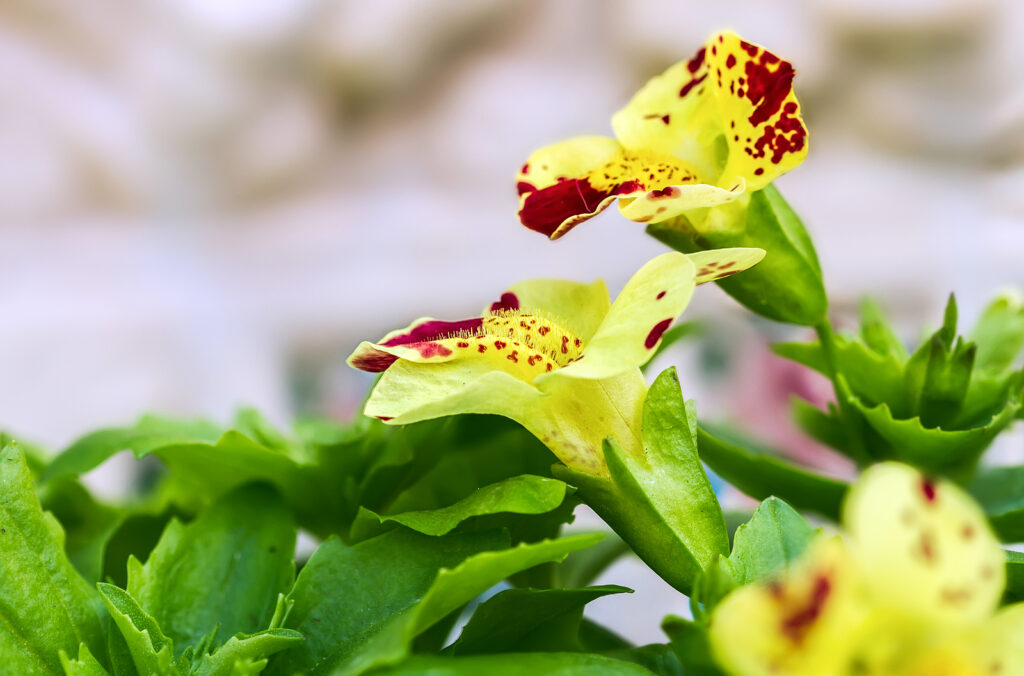
When to plant Mimulus
- Set established flowers in the garden in spring after all danger of frost has passed.
- Sow seeds indoors 14 to 15 weeks before the last frost in spring.
- Sow seed outdoors in spring after the last frost.
Planting and spacing Mimulus
- Sow seeds by simply pressing the seeds into the soil surface.
- When starting seeds indoors, press them into the soil in six-packs or small pots then place the containers in the refrigerator for 3 weeks; this will speed germination. After removing containers from the refrigeration, set them in a warm spot at about 70°F/21°C for germinating.
- Space monkey flowers 18 to 24 inches (45-61cm) apart.
How to water and feed Mimulus
- Mimulus need ample water; keep the soil evenly moist. Do not let the Mimulus go dry. Water regularly, especially in hot weather.
- Fertilize Mimulus every 2 to 4 weeks with an all-purpose fertilizer or work a slow-release fertilizer in the soil at planting time.
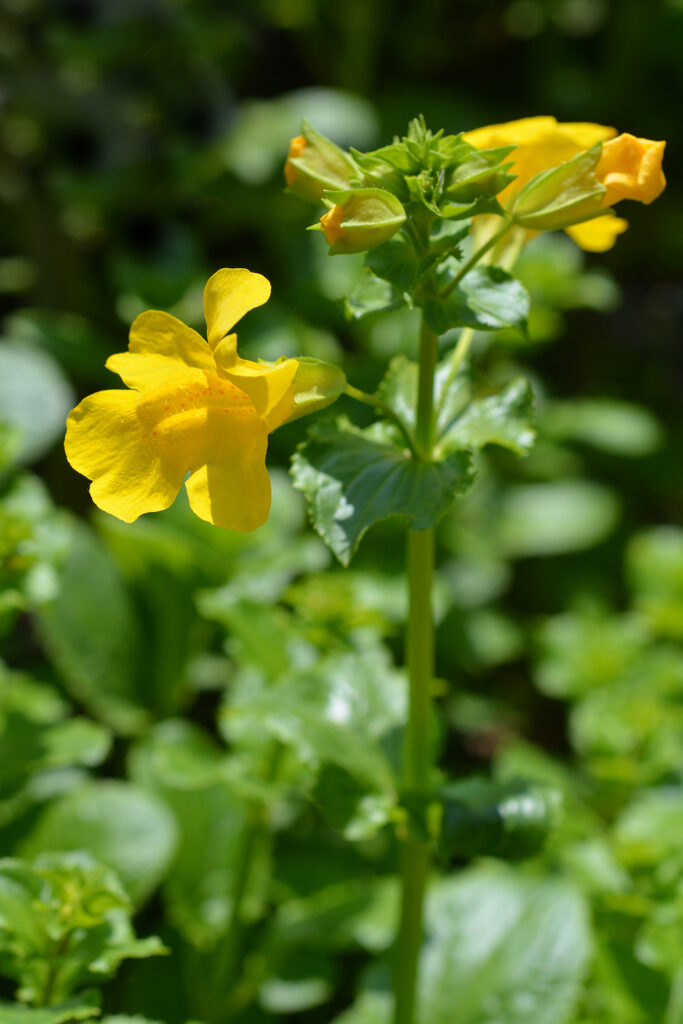
Mimulus care
- Mulch around Mimulus to keep the soil evenly moist.
- Remove the first blooms to promote further blooming.
- Dry weather can stop flowering; water plants generously to restore blooms.
Mimulus pests and diseases
- Mimulus are susceptible to attack by aphids and whiteflies.
Mimulus propagation
- Propagate Mimulus by divisions in spring and by cuttings in spring or summer.
- Sow seeds outdoors in spring.
- Seeds germinate in 5 to 7 days at 60° to 70°F (16°-21°C).
- Mimulus will self-sow.
Mimulus varieties to grow
- Mimulus x hybridus, hybrid monkeyflower. Tender perennial grows 6 to 12 inches (15-30cm) tall; bears tubular flowers with flared 2-inch wide faces usually in shades of orange-red, red, or yellow; grow as cool-weather annual. ‘Magic’ series offers many colors. ‘Magic Yellow Flame’ has striking orange and yellow flowers.
- M. luteus, yellow monkeyflower. Tender perennial grows to 12 inches (30cm) tall with long yellow flowers with red or purple-red spotted throats and petals; grow as a cool weather annual.
Mimulus frequently asked questions
Q: What are the best growing conditions for Mimulus?
A: Mimulus–monkey flower–must be grown where the climate is cool and humidity is high. Grow Mimulus in partial or full shade in moist, well-drained soil. Mulching will help prolong the life of the monkey flower.
Q: How do I start Mimulus–monkeyflower–from seed?
A: Do not cover Mimulus with soil when sowing seeds. The seeds need light to germinate. Give seeds and seedlings at least 13 hours of light each day. If you start seeds indoors, grow them under fluorescent light. Set transplants in the garden as soon as the soil is workable in spring. Mimulus can tolerate frost.

